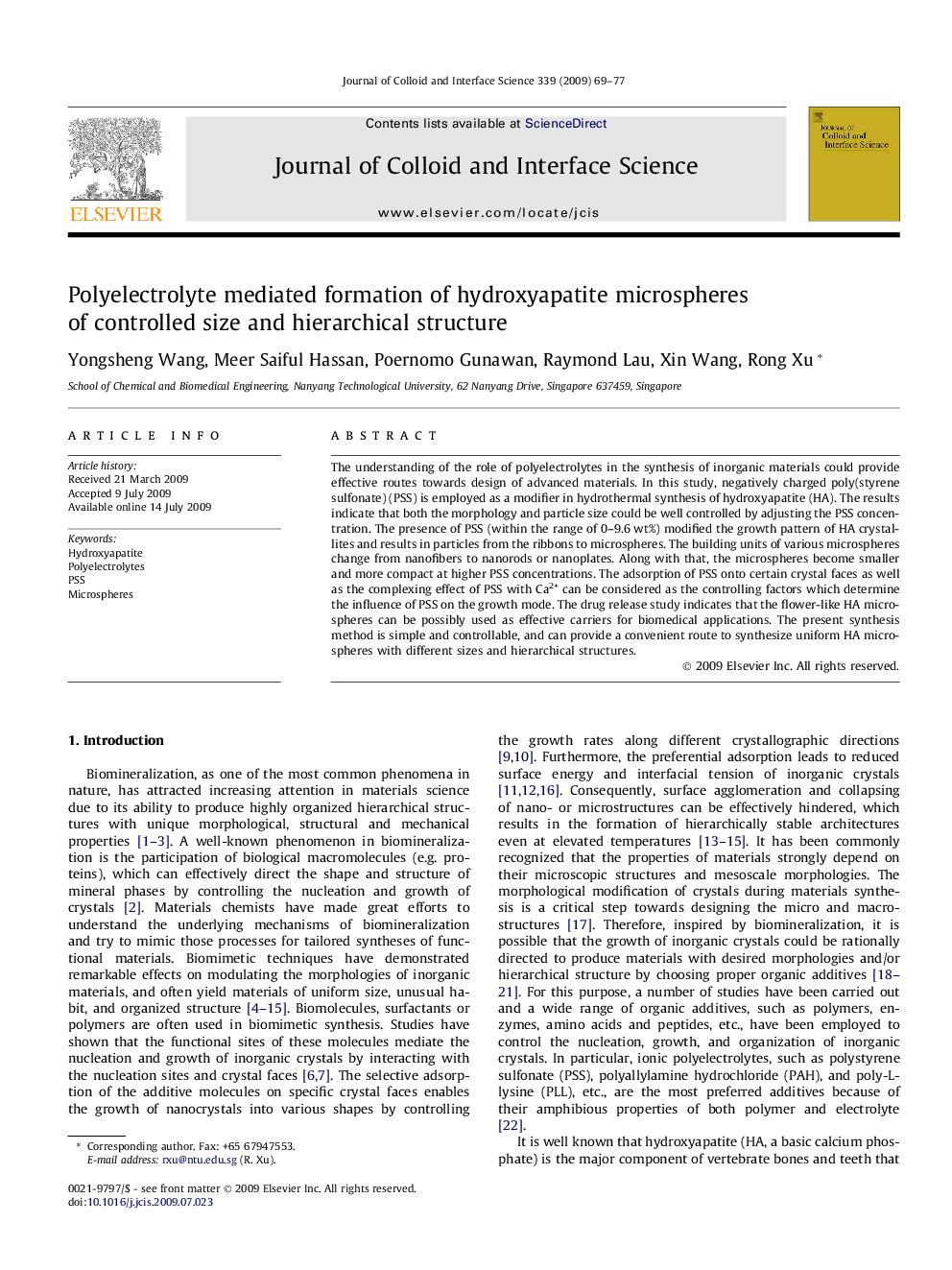| Article ID | Journal | Published Year | Pages | File Type |
|---|---|---|---|---|
| 609971 | Journal of Colloid and Interface Science | 2009 | 9 Pages |
The understanding of the role of polyelectrolytes in the synthesis of inorganic materials could provide effective routes towards design of advanced materials. In this study, negatively charged poly(styrene sulfonate) (PSS) is employed as a modifier in hydrothermal synthesis of hydroxyapatite (HA). The results indicate that both the morphology and particle size could be well controlled by adjusting the PSS concentration. The presence of PSS (within the range of 0–9.6 wt%) modified the growth pattern of HA crystallites and results in particles from the ribbons to microspheres. The building units of various microspheres change from nanofibers to nanorods or nanoplates. Along with that, the microspheres become smaller and more compact at higher PSS concentrations. The adsorption of PSS onto certain crystal faces as well as the complexing effect of PSS with Ca2+ can be considered as the controlling factors which determine the influence of PSS on the growth mode. The drug release study indicates that the flower-like HA microspheres can be possibly used as effective carriers for biomedical applications. The present synthesis method is simple and controllable, and can provide a convenient route to synthesize uniform HA microspheres with different sizes and hierarchical structures.
Graphical abstractHydroxyapatite microspheres of good uniformity, different size and hierarchical structure are formed via polyelectrolyte(PSS)-mediated hydrothermal synthesis. The flower-like porous microspheres are potential carriers of drug for biomedical applications.Figure optionsDownload full-size imageDownload as PowerPoint slide
